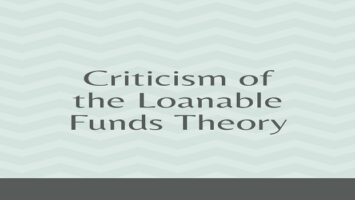Modern Theory of the Burden of Public Debt:
The modern theory of public debt or “the new orthodoxy” as Buchanan puts it, is an offshoot of the economics of depression or Keynesian economics. The economic anomaly created by the Great Depression of the 1930s gave way to the development of the new theory of public debt.
The traditional view, that continually unbalanced budget and rapidly rising public debt imperil the financial stability of the nations, gradually gave way to a new conception which states that huge public debt is a national asset rather than a liability and that continuous deficit spending is essential to the economic prosperity of the nation.” The classical theory of public debt assumed full employment and unproductiveness of public expenditure and the classical antagonism towards public borrowing was based on these assumptions. But, S. E. Harris observes that “once the economists, in a more realistic mood, allowed for unemployment, assumed elasticity in monetary supplies and agreed that Government expenditures could be productive and need not necessarily be wasteful, the case for public borrowing was strengthened.” It means that modern theory assumed that public expenditure need not be wasteful. It can be productive and an essential means of increasing employment.
Prof. A. H. Hansen, the exponent of modern fiscal theory also said that public debt is an essential means of increasing employment and has become an instrument of economic policy today.
Thus, the modern theory of public debt is concerned with macroeconomic variables and not with individual utilities; it assumes the whole economy as a unit. Modern economists believe that internally held public debt involves no burden since we owe it to ourselves.
According to them, external debt is regarded as a definite burden since repayment of principal and interest to foreign countries are entailed, such repayment involves a transfer of real goods and services from the debtor to the creditor country in payment of interest and principal amount.









Comments (No)